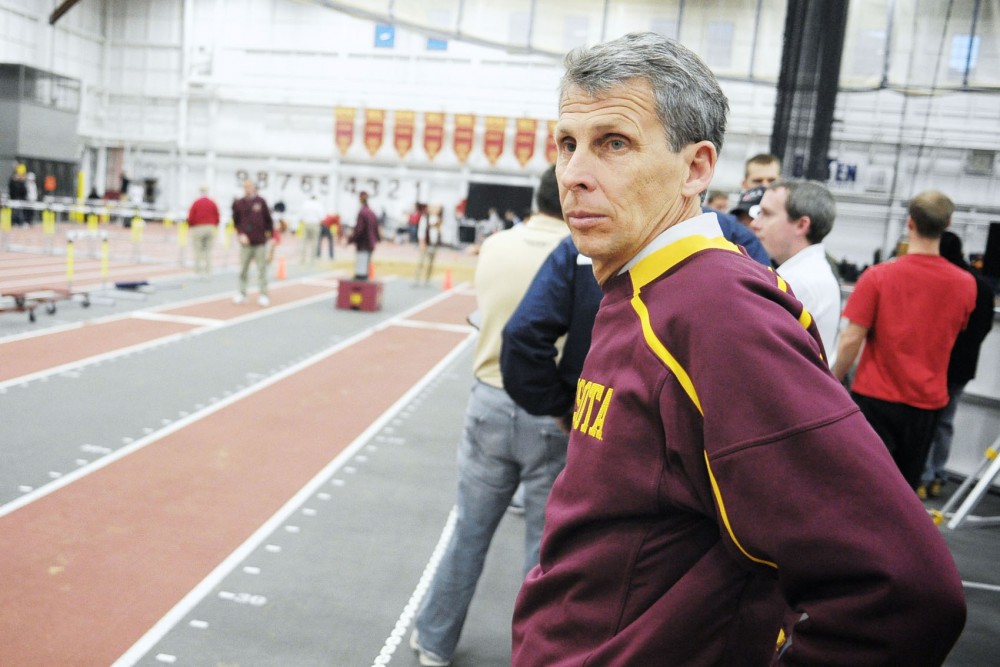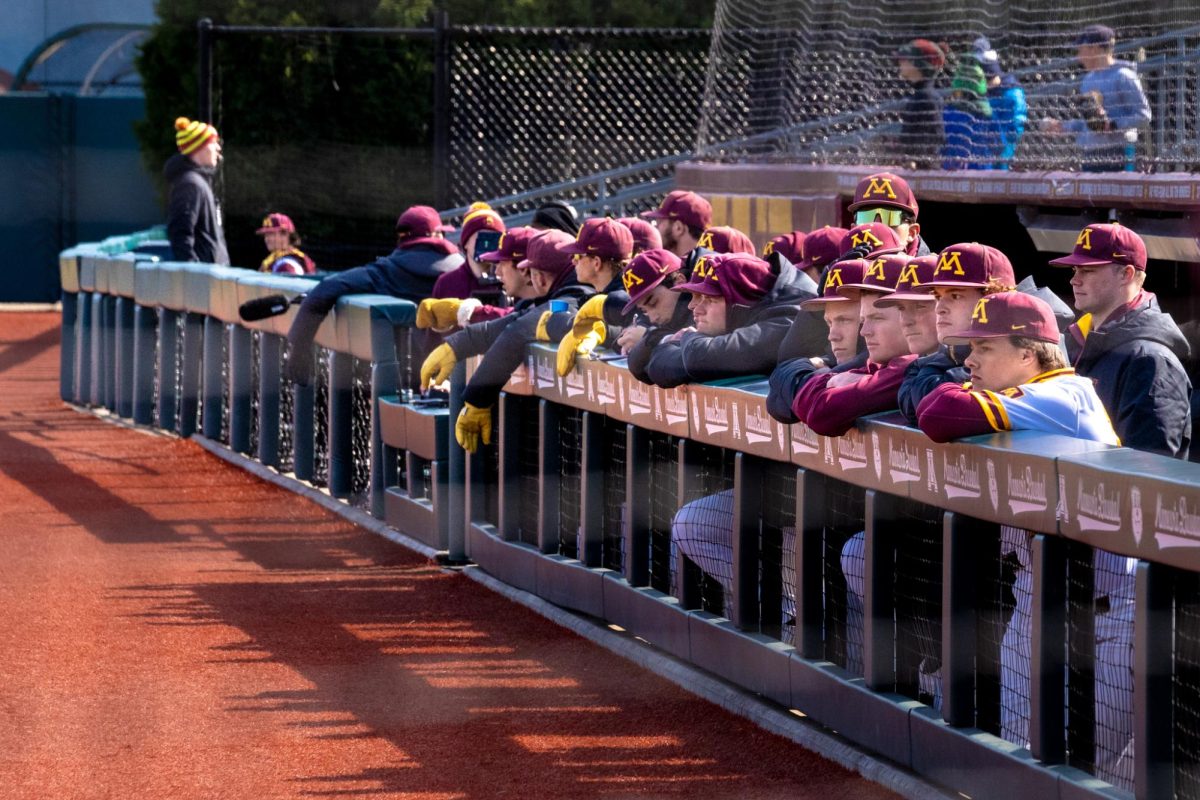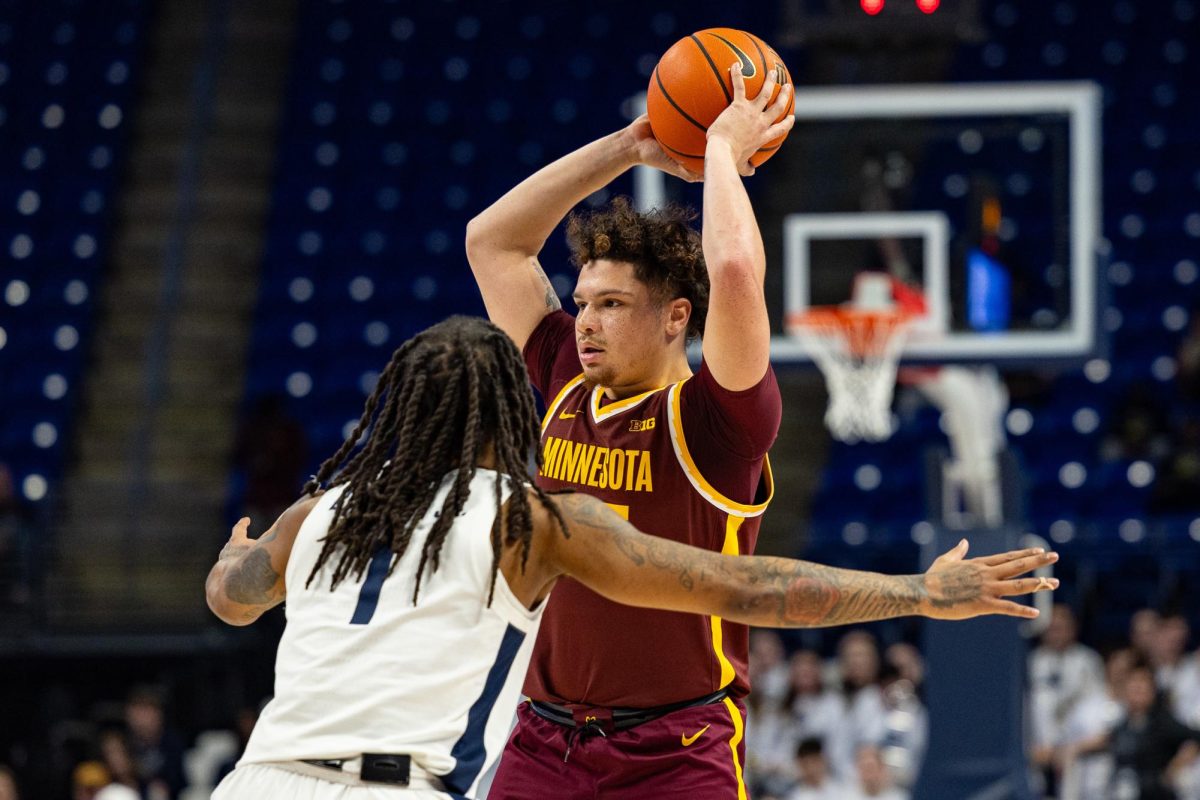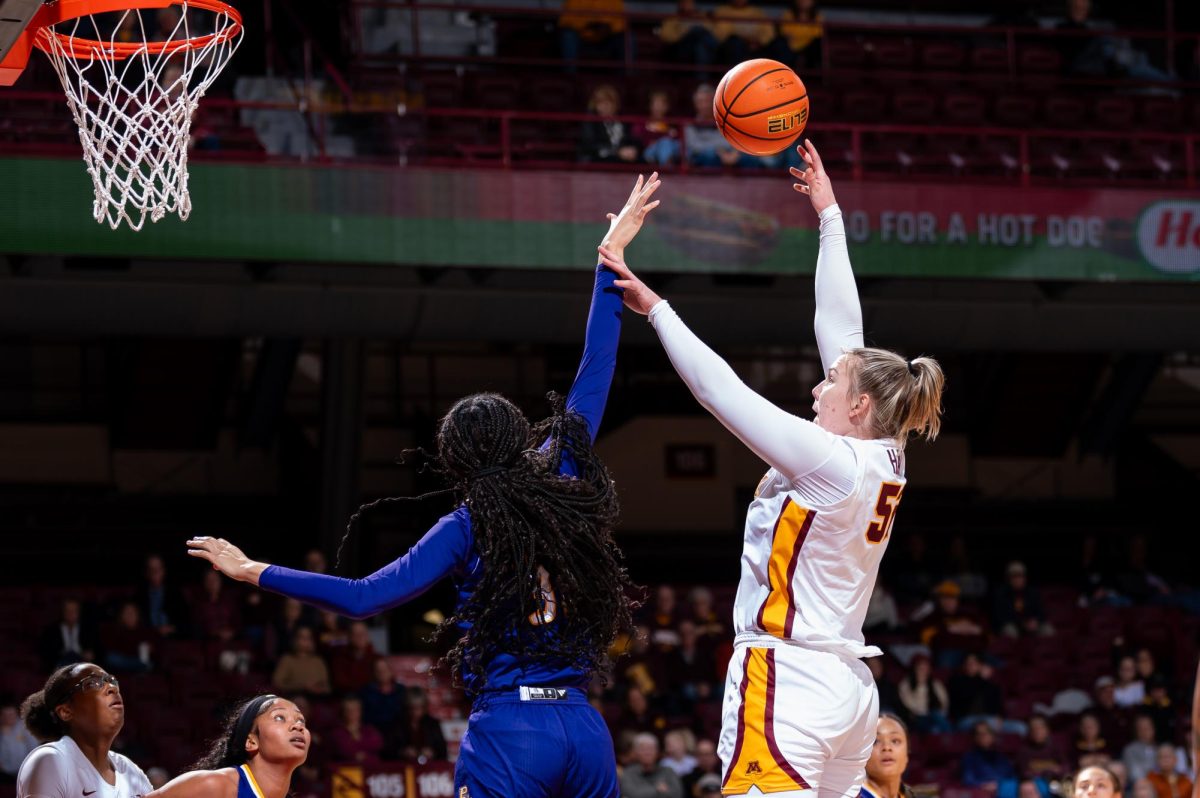Both of Minnesota’s track and field teams derailed on their way to the top this season but neither is throwing the baby out with the bath water just yet.
After freefalling to the bottom of the Big Ten, the women’s track and field team has hit one of its lowest points in recent history.
A decline that began in 2010 culminated this season as the team produced the worst results in head coach Matt Bingle’s six-year tenure.
Minnesota finished last in the 11-team field at the Big Ten indoor championships and failed to qualify any athletes for the NCAA meet. The team showed slight improvement by finishing ninth at the Big Ten outdoor championships and qualifying one relay to the NCAAs, but it still failed to meet expectations.
“Coming into the year, we were probably like a sixth-, seventh- [or] eighth-[place] type of team if everyone was healthy,” Bingle said. “Then when we had injuries … that did affect where we were at.”
Two of the team’s top athletes — Todea-Kay Willis and Alena Brooks — missed the entire indoor season with injuries. Top distance runner Steph Price missed the end of the indoor season and all of the outdoor season for undisclosed reasons.
“By all means, I’m not pleased with the results at the conference [meets], and I hope the women on the team feel the same way,” Bingle said. “It’s not the way we want to be and the place we want to be.”
Bingle first took over the women’s track and field program in 2007, replacing longtime head coach Gary Wilson.
Wilson coached Minnesota to a Big Ten outdoor title in 2006 and produced the program’s first individual national champion in the indoor season.
From 2007-09, Bingle led the Gophers to three more Big Ten indoor titles. At the 2009 NCAA indoor championships, he led them to a 12th-place finish, tied for the program’s best ever.
Team captain and senior Chimerem Okoroji experienced the ups and downs of the track and field team during her four-year career.
“I think there’s been a drop-off in performance, but I haven’t really noticed that big of a change,” Okoroji said. “I think we’re still the great team that we were when we came in, and we’re just trying to build up to the level where we can win championships.”
Willis said the changes in Minnesota’s results over the years are normal.
“You get on that point on the wheel where you’re not always on top, and you know you’re at the bottom,” Willis said.
Willis, who has one year left with the Gophers, said it’ll be important for the upperclassmen to lead their younger teammates.
Bingle said the incoming recruiting class, which features three of the top runners from Minnesota, will benefit the team in the long run. He said he expects the newcomers to hit their stride by 2014.
“There’s some people in that class who will help us right away in some areas where we need help, and then there’s some talented kids, but they need time to get stronger,” Bingle said.
The formula for climbing back to the top of the wheel is simple, according to Bingle.
“The coaches [have] got to do a good job of coaching and recruiting, and the women on the team have to fix the things they need to fix,” Bingle said.
“As coaches, I’m working my tail off,” Bingle said. “I want more. I hate to lose.”
Men look to reload with deep 2013 roster
The men’s track and field team saw its run of dominance under head coach Steve Plasencia end in 2012.
The Gophers placed second at the Big Ten indoor championships and seventh at the outdoor meet. The program had won five consecutive conference titles from 2009-11 and hadn’t finished out of the top-two since Plasencia’s first season in 2009.
Six of Minnesota’s seven qualifiers to the NCAA indoor championships won All-America honors, but only three of their nine NCAA outdoor competitors made All-America.
“We stubbed our toe at the Big Ten outdoor meet,” Plasencia said. “We just got caught in a situation where … we were kind of thin. We had the upper crust of guys, but we didn’t have that depth that we’re accustomed to.”
Plasencia said that lack of depth, combined with a strong Big Ten field for the outdoor season, contributed to Minnesota’s struggles.
Hassan Mead has competed for Minnesota since 2007 and become the team’s most prolific runner. The graduating senior said this year was only a blip on the Gophers’ radar.
“I got to see all the good and the bad … but that’s the ideal of a sports team,” Mead said. “You’re not always going to dominate. You’re going to have two or three years where you’re outstanding, and then you’re going to lose some athletes, and then you’re going to have to rebuild it again.”
Plasencia acknowledged this trend as well, saying there are “ebbs and flows” in a team’s history.
Minnesota completed the entire 2012 season without injured senior Ben Blankenship.
Mead, who ran his final collegiate meet at this year’s NCAA outdoor championships, said the Minnesota distance field is still in good shape.
“The one thing I guarantee: They’re going to have six or seven guys that are going to be much closer together … than having one or two guys way ahead of the group,” Mead said. “With distance guys … you want them to be as close as possible, and that’s what they’re going to have for the next few years.”
As for the rest of the team, every NCAA competitor besides Mead and David Pachuta has at least one more year of eligibility.
“I’m not concerned at all,” Mead said. “They’re in great hands.”








